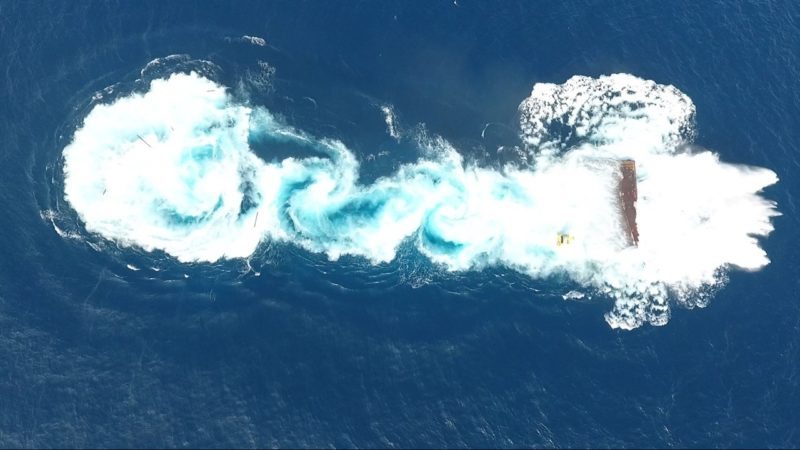The Kraken Serves Texas as an Artificial Reef
This is Passport to Texas
On Jan. 20th, Texas Parks and Wildlife’s Artificial Reef Program sank a 371-ft cargo vessel, named The Kraken, more than 60 miles off the coast of Galveston. Alison Baldwin is an Artificial Reef technician.
Because Texas [gulf floor] doesn’t have a lot of structure, it makes it hard to for fishermen to fish because fish really enjoy structure. So any time we put structure out here, it’s really good for fishermen and divers.
Program Leader, Dale Shively, says the Kraken, which began life in 1987 as a Japanese cargo ship, was cleaned of fuel, oil and hazardous materials before being deployed into gulf waters.
We’re at our reef site, about 65 miles out of Galveston. We’re trying to maneuver into a deep water spot that’s at least 140 feet deep.
To facilitate a controlled flood to sink the ship, Baldwin says work crews cut four large holes into the its hull.
Water will rush into the stern, and we’re hoping that the stern touches the bottom first, and all that super structure will fill with water, and it will bring the bow down nice and slow.
Everything progressed flawlessly, because of the planning and preparation that went into it beforehand.
As soon as we sink the ship, there should be fish on it in minutes—which is really exciting.
Since 1990, the artificial reef program has documented more than 200 marine fish species that make these complex, stable and durable habitats home.
The Sport Fish Restoration program supports our series.
For Texas Parks and Wildlife…I’m Cecilia Nasti.



 Passport to Texas is a
Passport to Texas is a  Passport to Texas is made available by:
Passport to Texas is made available by: